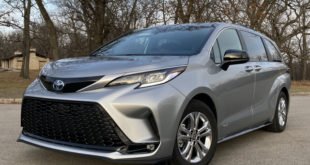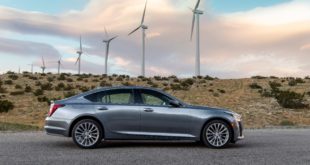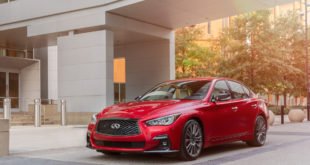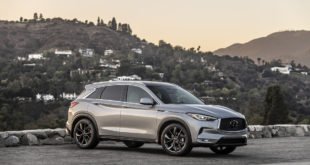
It takes longer to correctly pronounce “Porsche Taycan” than it takes to accelerate up to 60 mph—less than three seconds.
If you need to learn the correct pronunciation, which is “TIE-cahn” as in “Ticonderoga,” the Taycan can hit 100 mph—less than seven seconds. If you’re interested in knowing where the word “Taycan” came from, the first all-electric Porsche sports car may very well be in another time zone.
The 2020 Porsche Taycan is pure performance and one of the quickest cars we’ve ever driven. It’s an 8.8 on our overall scale, propelled by its perfect efficiency, performance, and beautiful exterior. (Read more about how we rate cars.)
Review continues below
The Taycan’s exterior suggests the kind of performance found behind the wheel. All the greatest Porsche hits are there: the 911’s hood, the Cayman’s hips, the Panamera’s window and roof line, but with a twist up front in the Taycan’s “fangs.”
Inside, the Taycan is equally beautiful but overshadowed by up to four touchscreens, a wide and curved digital instrument cluster, and shocking performance.
The Taycan uses two electric motors and a 93.4-kwh lithium-ion battery for propulsion in a breathtaking way. We’ve only driven the Turbo and Turbo S models, which take the top spots in Porsche’s lineup in luxury and performance (outside of GT editions that may come later). The Turbo and Turbo S make 616 horsepower in nearly every circumstance, but diverge at launch. The Turbo S can deliver 750 hp and more than 774 pound-feet of torque in 2.5-second bursts to propel the car up to 60 mph in 2.6 seconds (perhaps less). The Turbo does the deed in 3.0 seconds with 670 hp with alacrity—perhaps not the same savagery, though.
Both the Taycan Turbo and Turbo S use a two-speed transmission at the rear to toggle between brutal launch forces and brutal efficiency. The EPA hasn’t yet weighed in but based on our tests we imagine the Taycan’s final rated range will land around 240 miles.
The Taycan uses Range, Normal, Sport, and Sport+ modes to configure performance including steering weight, air suspension stiffness, acceleration, and even artificial sounds. It all works in concert to deliver a thrilling ride—regardless of setting.
The Taycan tips the scales at more than 5,100 pounds without passengers aboard and relies on massive stoppers to recoup energy and arrest the prodigious performance. The Taycan doesn’t hide its weight—it flaunts its ability to do everything with that much mass in an even more stupefying performance metric.
Inside, four adults will fit if they’re average builds or smaller. Bigger passengers—weight and height—will want to ride up front; entry and exit into the rear seats may compromise some integrity and back muscles.
Once aboard, the Taycan is luxurious and comfortable. Up to five screens are available in the Taycan: a 16.8-inch curved instrument cluster, a 10.9-inch touchscreen for infotainment in the middle, an 8.4-inch touchscreen for climate controls and some vehicle functions, a 10.9-inch passenger-side touchscreen for infotainment, and a 5.4-inch rear touchscreen for climate control in the rear. Only the last two are optional extras.
The Taycan Turbo’s standard equipment includes 20-inch wheels, an adaptive air suspension, rear-axle steering, LED headlights, LED interior lights, dual-zone climate control, 14-way adjustable front seats, and leather upholstery.
Hold your breath for performance—and price. The Taycan Turbo costs at least $ 150,000 and easily runs past $ 200,000 in Turbo S configurations with just a handful of options.



